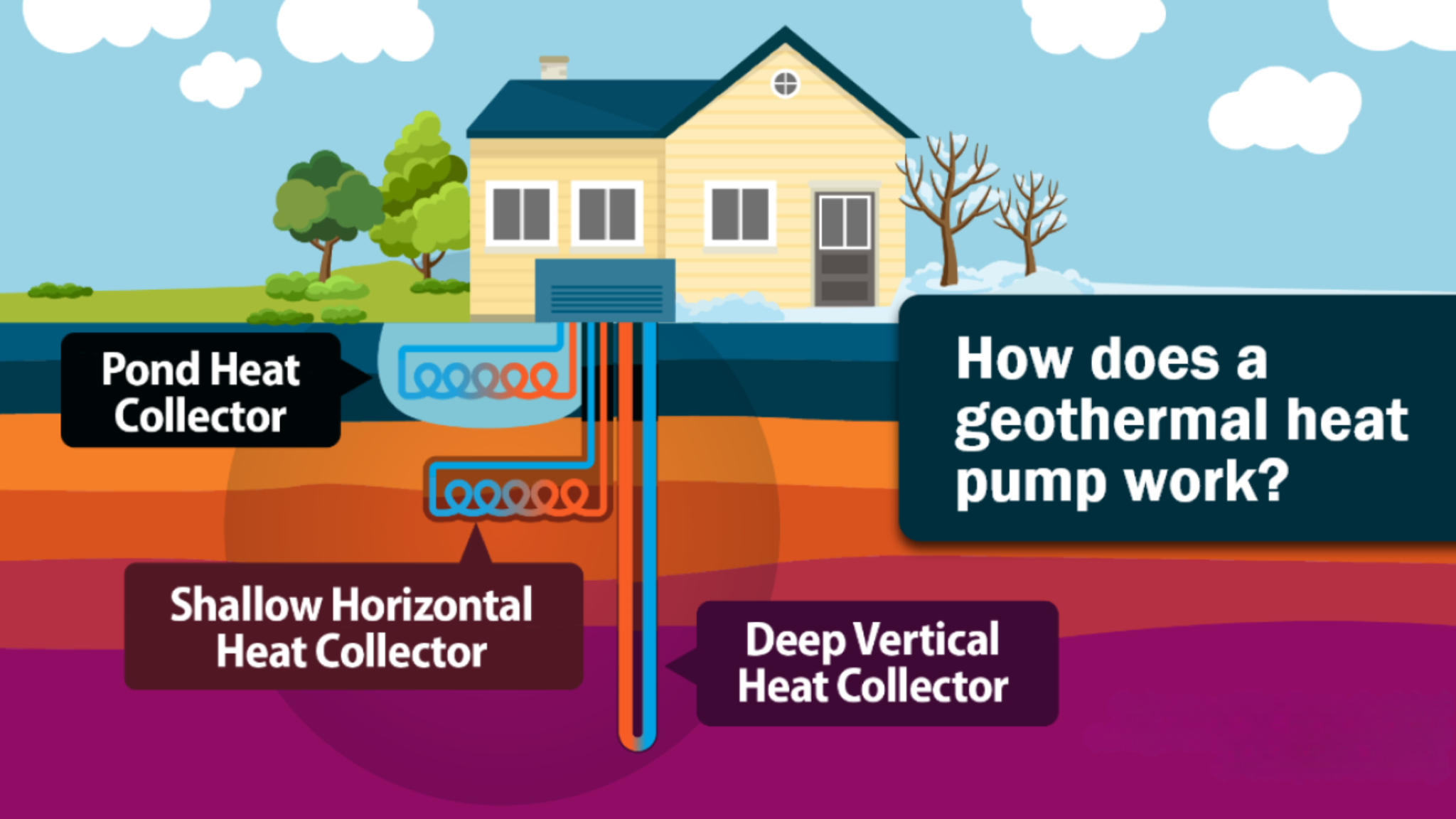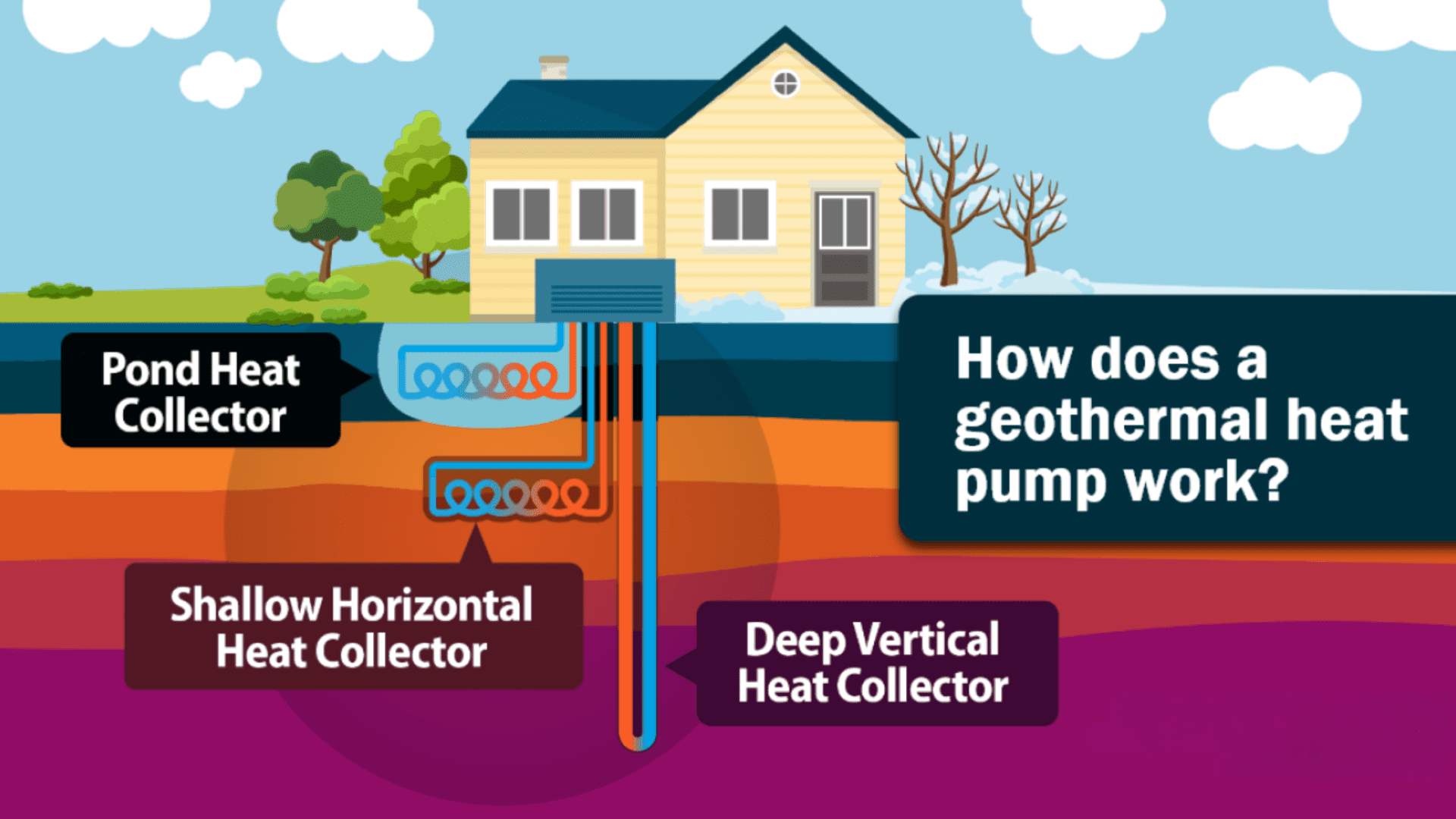
Understanding Geothermal Heat Pump Systems
Understanding geothermal heat pump systems can provide you with insights into efficient heating and cooling solutions for your home.

One powerful system, three smart configurations—see how geothermal heat pumps efficiently heat and cool your home.
In the quest for energy efficiency and sustainable living, homeowners are turning to innovative solutions. One such solution is the geothermal energy through a geothermal heat pump.
Geothermal heating and cooling systems are a smart option for homeowners. They help save on energy costs and reduce environmental impact. These systems use the stable temperature beneath the earth’s surface to heat and cool your home efficiently. With lower utility bills, fewer emissions, and long-term comfort, it’s no wonder more homeowners are choosing geothermal.
But what exactly is a geothermal heat pump? How does it work? And is it worth the investment? This guide will answer those questions and more.
At Appolo Heating, we support homeowners throughout every step of their geothermal journey. We take care of geothermal units at all our locations. We also offer replacement services at our Schenectady branch. Please note that we do not do new installations at this location.
For questions or service requests, reach out to us at appoloheating.com or give us a call at 866-733-1702.
What Is a Geothermal Heat Pump?
A geothermal heat pump (GHP) is a system that uses the earth’s natural, steady temperature to heat and cool your home. Geothermal systems are different from regular heating and cooling systems.
They use the ground’s natural temperature to keep indoor spaces comfortable. They use the ground’s steady temperature instead of outside air. This temperature stays between 40°F and 70°F all year.
This means even when it’s freezing outside or scorching hot, the ground a few feet below stays just right. That steady heat makes it the perfect source for energy-efficient heating and cooling.
To learn more about how geothermal heat pumps work, visit the U.S. Department of Energy’s guide.
How Do Geothermal Systems Work?
At the heart of every geothermal system is a simple idea: move heat instead of making it.
Here’s how it works:
- Ground Loop – A series of pipes buried in the ground (or placed in a pond/lake). These pipes circulate fluid that absorbs or releases heat depending on the season.
- Heat Pump – Located inside your home, this unit moves heat from the ground loop into your home during winter. In summer, it pulls heat out of your home and pushes it back underground.
- Distribution System – Just like a regular HVAC system, this delivers warm or cool air throughout your home.
Instead of burning fuel to create heat, a GHP transfers it. That means less energy used and more money saved.
Types of Geothermal Heat Pump Systems
Not every property is the same, so geothermal systems come in different styles to fit your land and needs.
Horizontal Loop Systems
These systems are best for homes with plenty of land. Workers lay out pipes in long, shallow trenches.
Vertical Loop Systems
When space is tight, vertical systems are used. Workers drill deep holes (100 to 400 feet) and insert pipes straight down.
Water Source Heat Pump
If you have access to a pond or lake, this can be a great option. Workers submerge pipes in the water to transfer heat.
Open-Loop Systems
These draw water from a well or lake, use it to exchange heat, and then return it. Cost-effectiveness depends on water availability.
Hybrid Systems
Hybrid systems combine geothermal with air-based cooling systems. These are ideal in areas where cooling needs are higher than heating.
A professional installer can help you determine which type is best based on soil conditions, space, and climate.
Benefits of Geothermal Heating and Cooling
Geothermal systems aren’t just good for the planet. They’re great for your home too.
Energy Efficiency
Geothermal systems can cut your energy use by up to 65%. That means substantial savings on your utility bills every month.
Lower Carbon Footprint
Because they use a renewable energy source (the ground), geothermal systems help reduce greenhouse gas emissions.
Long Lifespan
Indoor equipment lasts around 25 years. Ground loops can last over 50 years. That’s a system you won’t need to replace anytime soon.
Quiet Operation
No more noisy outdoor units. Geothermal systems operate quietly, helping maintain a calm and comfortable atmosphere in your home.
Comfort Year-Round
GHPs keep indoor temperatures and humidity levels steady. No more drastic fluctuations in comfort as the weather changes.
Easy Installation and Maintenance
Installing a geothermal system is more complicated than a traditional system. However, it is a one-time investment that offers lasting benefits.
A professional will:
- Evaluate your property
- Choose the best system for your site
- Install ground loops and the indoor pump
Once installed, these systems need minimal maintenance. Routine checks and filter changes are usually enough.
At Appolo Heating, we maintain geothermal systems across all our branches to keep them running at peak efficiency. Our Schenectady branch also handles replacements.
Designed for Busy Lifestyles
Today’s geothermal systems are built for convenience.
- Flexible Installation: Technicians can work around your schedule.
- Smart Home Integration: Many systems can connect with thermostats and smart devices for easy control.
- Minimal Upkeep: No more worrying about yearly AC or furnace tune-ups.
Dual-Source Systems: A Smart Combo
Some homeowners choose dual-source heat pumps. These combine geothermal and air-source heat pumps. The system automatically switches to the most efficient option based on the outdoor temperature and energy demand.
This setup balances cost and performance, making it a smart choice in areas with large temperature swings.
Environmental Impact
Geothermal systems help protect our planet.
- They reduce fossil fuel use.
- They lower greenhouse gas emissions.
- They support clean, renewable energy.
By investing in geothermal, you’re not just improving your home. You’re contributing to a healthier environment.
Cost and Savings
Geothermal systems cost more upfront than traditional systems. But they pay off over time.
- Installation Cost: Higher than standard HVAC systems
- Tax Credits and Incentives: Many states offer rebates and federal tax credits
- Return on Investment: Most homeowners recover costs in 5 to 10 years
- Monthly Savings: Significant drop in heating and cooling bills
Over time, a geothermal system can save thousands of dollars.
Is Geothermal Right for You?
If you’re looking for:
- Lower energy bills
- Long-term comfort
- Sustainable living
- Low-maintenance HVAC
…then geothermal is a smart choice.
Contact Appolo Heating or call 866-733-1702 to speak with one of our geothermal experts. We’ll help assess your system, provide maintenance, or schedule a replacement at our Schenectady location.
